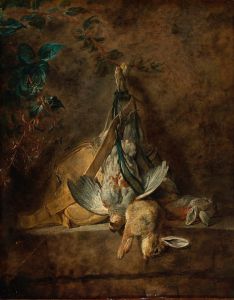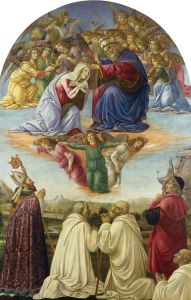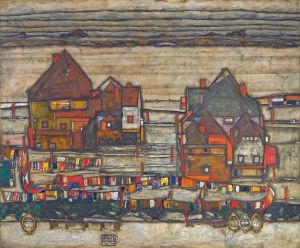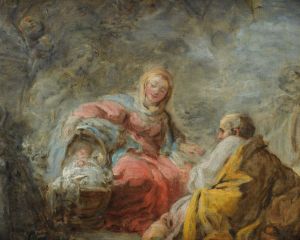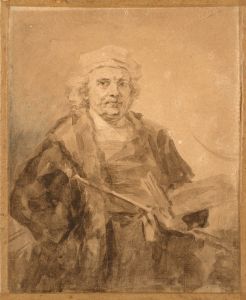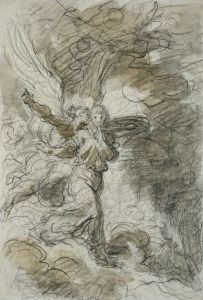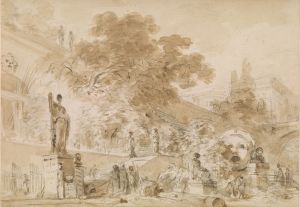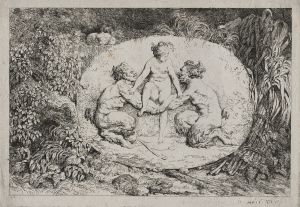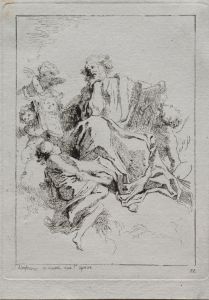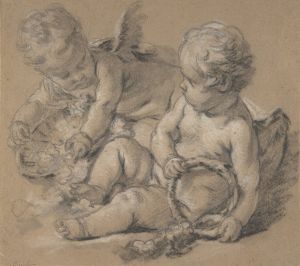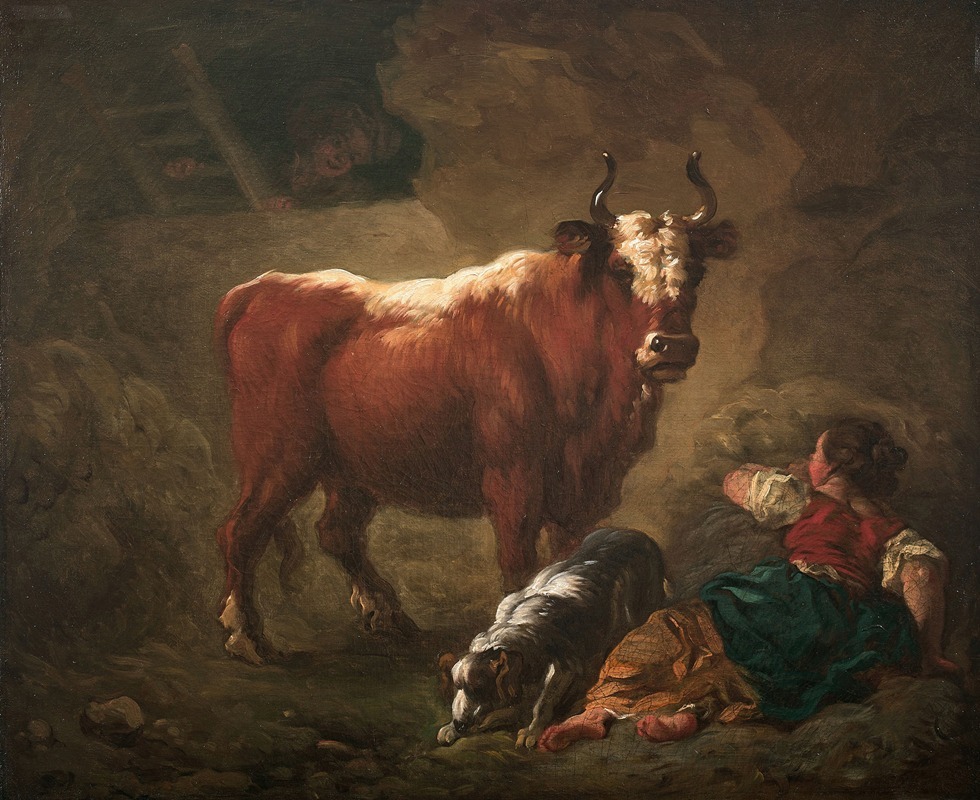
Intérieur d’étable
A hand-painted replica of Jean-Honoré Fragonard’s masterpiece Intérieur d’étable, meticulously crafted by professional artists to capture the true essence of the original. Each piece is created with museum-quality canvas and rare mineral pigments, carefully painted by experienced artists with delicate brushstrokes and rich, layered colors to perfectly recreate the texture of the original artwork. Unlike machine-printed reproductions, this hand-painted version brings the painting to life, infused with the artist’s emotions and skill in every stroke. Whether for personal collection or home decoration, it instantly elevates the artistic atmosphere of any space.
Jean-Honoré Fragonard's Intérieur d’étable (translated as Interior of a Stable) is a painting attributed to the French Rococo artist Jean-Honoré Fragonard (1732–1806). Known primarily for his playful and romantic scenes, Fragonard also explored a variety of subjects throughout his career, including landscapes, portraits, and genre scenes. Intérieur d’étable is one of his lesser-known works and represents a departure from the lighthearted and ornate themes typically associated with his oeuvre.
The painting depicts the interior of a rustic stable, characterized by its earthy tones and a focus on the interplay of light and shadow. The composition includes animals and possibly human figures, though the details are rendered with a loose, almost sketch-like quality. This approach reflects Fragonard's mastery of dynamic brushwork and his ability to convey atmosphere and texture. The work is notable for its subdued palette, which contrasts with the vibrant colors often seen in his more famous pieces, such as The Swing.
The exact date of the painting is not definitively known, but it is believed to have been created during the latter part of Fragonard's career, when he began to experiment with more diverse subject matter. During this period, Fragonard's style evolved, and he produced works that were less focused on the frivolity of Rococo themes and more attuned to naturalistic and everyday scenes.
Little is documented about the commission or provenance of Intérieur d’étable. It is not among Fragonard's most widely studied or exhibited works, and its history remains somewhat obscure. The painting is occasionally referenced in discussions of Fragonard's versatility as an artist and his ability to adapt his style to different genres.
As with many of Fragonard's works, Intérieur d’étable showcases his technical skill and his ability to capture mood and texture with remarkable efficiency. While it may not hold the same level of recognition as his more iconic paintings, it contributes to a broader understanding of his artistic range and interests.
Further research and documentation would be required to provide a more comprehensive account of this painting's context and significance within Fragonard's body of work.





